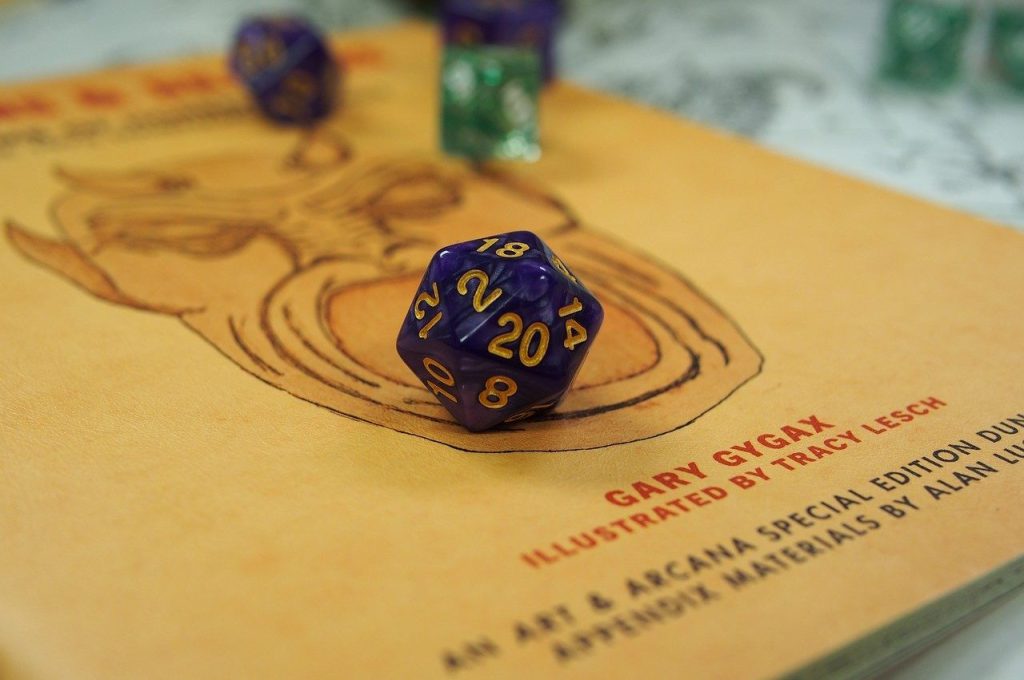East Lansing, Michigan, August 15, 1979 — James Dallas Egbert III, 16, disappears. The child prodigy went missing at Michigan State University, where he studied computer science and played the fantasy roleplay game Dungeons & Dragons. Egbert was shy and especially small for his age. The young boy faced intense academic pressure, battled drug addiction and was a latent homosexual. He entered the steam tunnels underneath his college, intending to commit suicide by consuming methaqualone but failed. Egbert woke up the next day and fled. His parents hired private investigator William Dear to track him down.
Dear discovered Egbert’s fascination with D&D after scoping through his dormitory, where he found evidence suggesting Egbert hosted games in the tunnels with other students. The private eye told local media that D&D played a crucial role in the boy’s disappearance and may have influenced him to attempt to take his own life. This set off a wave of hysteria that eventually blended into the 1980s’ ‘Satanic Panic’ — a moral panic in the US which labeled culturally taboo items such as heavy metal music, horror films and roleplaying games like D&D as occult activity.
The science-fiction fantasy game was created in 1974 by Gary Gygax and Dave Arneson. Players pretend to be fantasy characters who are guided through adventures and scenarios by a dungeon master. Egbert’s scandal and the intense media attribution to Satanism resulted in D&D’s prohibition in schools, stores and even prisons across the country. The demonization, at the time, boosted sales and the game’s profile as the creators dismissed accusations.
‘He [Dear] was a publicity hound,’ Timothy Kask, who developed D&D with Gygax and Arneson, told the New York Times. ‘He knew that he could hang it on D&D and gather a lot of media frenzy, and he did. Dallas Egbert was a tragic story; a brilliant young man sent off to university at 15. It had nothing to do with D&D in the steam tunnels.’
The panic continued into 1982 when Virginian high school student Irving Lee Pulling II killed himself. Patricia A. Pulling, his mother, claimed the game was responsible and founded ‘Bothered About Dungeons & Dragons.’ In 1984, Missouri teenager, Mary C. Towey, was strangled to death by Ronald G. Adcox and Darren Lee Molitor. What connected both cases? They all played D&D.
Despite the negative press and notoriety, the game’s sales rose from thousands to millions. By the mid-Eighties, the RPG had accumulated nearly $30 million in sales in 22 countries, according to the Wall Street Journal. D&D had tapped into the Gen X zeitgeist, resilient against parental outrage and impervious to media inflamed Satanic hysteria. Yet, in 2020, Gygax and Arneson were dead, and D&D had changed ownership. A new controversy reared its head — racism.
Accusations of racism have long haunted the fantasy realm, dating back to the days of Lord of the Rings author J.R.R. Tolkien. Critics claim Tolkien’s physiology of orcs as barbaric and murderous creatures was designed to reflect people of color, primarily blacks, negatively. The same thoughts made their way to the doorsteps of D&D. In June 2020, as racial riots upended the country following the death of George Floyd, D&D’s publisher Wizard of the Coast released a statement entitled ‘Diversity and Dungeons & Dragons.’ The company denounced D&D’s alleged history of racism stemming from its characterization of orcs and drow races (also known as ‘dark elves’).
‘Throughout the 50-year history of D&D, some of the peoples in the game — orcs and drow being two of the prime examples — have been characterized as monstrous and evil, using descriptions that are painfully reminiscent of how real-world ethnic groups have been and continue to be denigrated,’ the statement reads. ‘That’s just not right, and it’s not something we believe in. Despite our conscious efforts to the contrary, we have allowed some of those old descriptions to reappear in the game. We recognize that to live our values, we have to do an even better job in handling these issues. If we make mistakes, our priority is to make things right.’ The company vowed to offer new descriptions and rewrite the rules for races in future guidebooks.
Wizards of the Coast assumed control of D&D in 1997 and is far removed from the leadership which reigned during the ‘Satanic Panic.’ A new disclaimer on the D&D store reads:
‘We (Wizards) recognize that some of the legacy content available on this website does not reflect the values of the Dungeons & Dragons franchise today. Some older content may reflect ethnic, racial and gender prejudice that were commonplace in American society at that time. These depictions were wrong then and are wrong today…Dungeons & Dragons teaches that diversity is a strength and we strive to make our D&D products as welcoming and inclusive as possible. This part of our work will never end.’
While many in the online media sphere welcomed the reforms with open arms, veterans and newer players have concerns.
‘The move indicates that they are turning the setting into a sort of milquetoast, politically correct setting free of conflict,’ conservative writer Ian Miles Cheong told The Spectator. Cheong himself started playing D&D as a child in the late Eighties with his mother.
‘They’re stripping it of all character by re-characterizing the orcs and drow — two complex, yet canonically evil cultures (or races, per D&D’s original definition) — into approximations of real-world cultures in some ill-conceived move to “decolonialize” Dungeons & Dragons.’
‘They say that “Dungeons & Dragons teaches that diversity is strength,” but their efforts to inject so-called “diversity” into D&D will only dilute the setting by stripping it of its core elements.’
Cheong predicts that aligning the game with a partisan ideology will drastically affect the average player in the long run.
‘These changes have a trickle-down effect,’ he said. ‘While players are free to ignore the rules and recommendations provided Wizards of the Coast, the guidance they’re provided in the Player’s Handbook and Monster Manual will color the experiences players can, and will have in the future — assuming they don’t lose interest in the setting altogether and move on to a less restrictive setting like Pathfinder.’
Senior editor at Reason Robby Soave, who The Spectator has learned is a sought-after player in the Beltway’s D&D circles, is more ambivalent.
‘Some of these changes don’t really bother me,’ Soave said. ‘Wizards of the Coast speaks of portraying orcs and the drow in a less negative light, for instance. I think one of the most fun things about D&D is that the dungeon master and the player can put their own spin on familiar fantasy archetypes. Encouraging players to further subvert the norms of good and evil, and which races belong to what categories, is all fine by me.’
‘I think having sensitivity readers go through the material and sanitize it of potentially problematic content is somewhat concerning. Are they trying to say we should stick to Western fantasy archetypes because that’s the genre the game comes from? Deference to hypersensitivity can be boring and uncreative.’
Regardless, Wizards of the Coast is following in the footsteps of the game’s creators by raking in cash amid controversy. Last year, D&D sales broadened by 33 percent continuing a six-year streak of continued growth. Overall revenue for the publisher rose by 24 percent, reaching $816 million, according to CNBC.
‘The beauty of D&D is that players can ignore the official storylines, narratives, maps and characters if they find them ridiculous,’ radio host and D&D junkie Larry O’Connor told The Spectator. ‘So this entire exercise is performative to get attention but the actual players will just look the other way and laugh.’


















